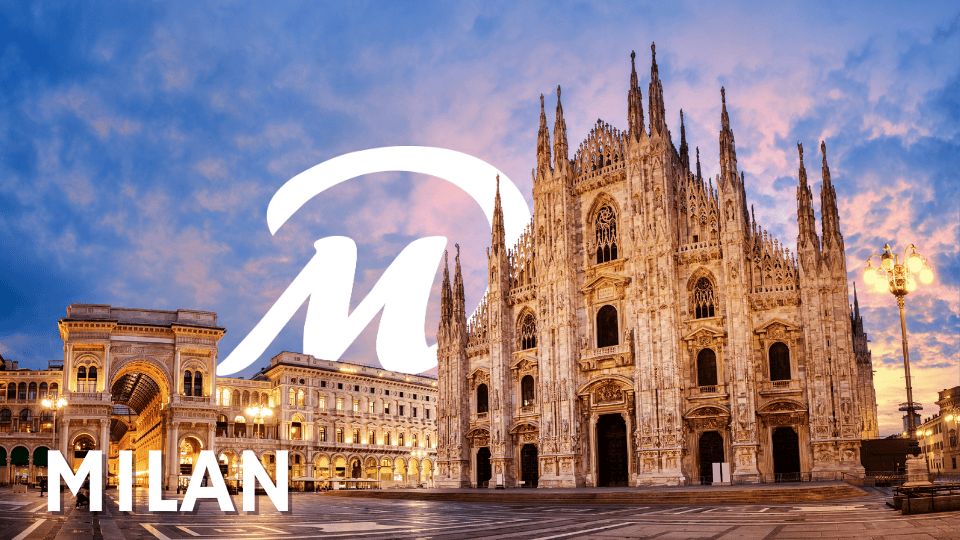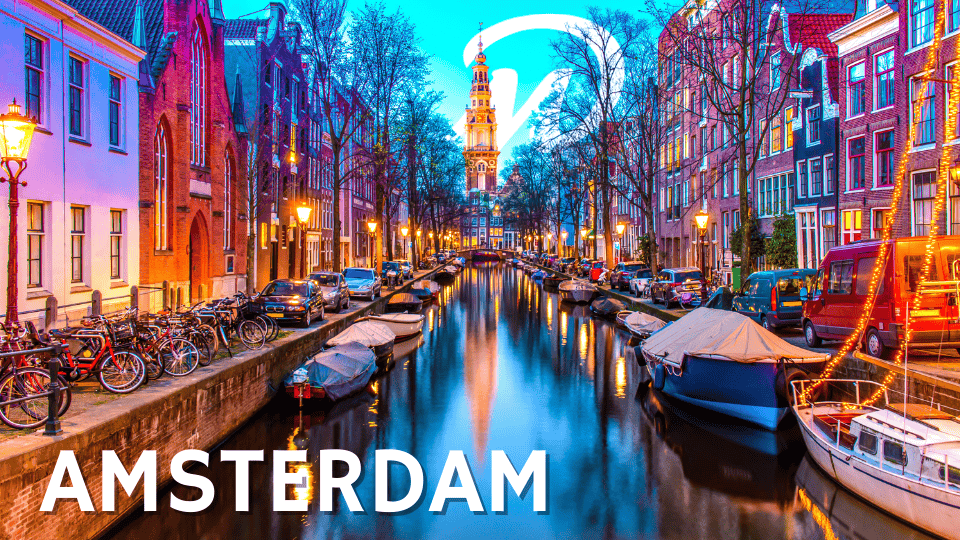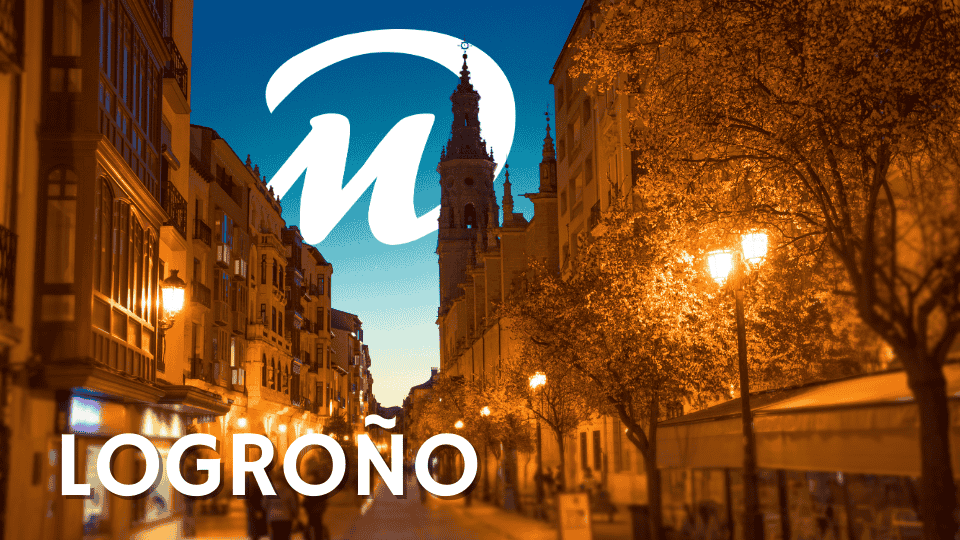
Explore Logroño using DareMapp, the perfect tool to discover what rhings to do in Logroño, from its rich history to its vibrant nightlife.
Things to do in Logroño
Things to do in Logroño, the capital of wine, tapas and the history of the Camino de Santiago!
If you have ever dreamed of getting lost in a city where you can start the day with a visit to a Romanesque church, have lunch with tapas with designation of origin, and finish with a stroll along the Ebro while the sun goes down, Logroño is the place for you. This city, the heart of La Rioja, combines heritage, gastronomy and good atmosphere like few others.
Strategically located between the green north and the centre of the mountains, Logroño surprises with its quality of life, its hospitality and its perfect blend of tradition and modernity. If you are wondering things to do in Logroño, here you will find everything from medieval streets to squares full of terraces, centuries-old churches, urban parks and the legendary atmosphere of Calle Laurel.
In Logroño, every corner has something to tell: a legend of the Camino, a shared toast or a forgotten story among centuries-old stones.
A small city, yes, but with a big soul.
⌛ DO YOU WANT TO KEEP SEARCHING THROUGH BLOGS, OR DO YOU PREFER TO HAVE YOUR GUIDE OF WHAT TO SEE IN LOGROÑO ALREADY PREPARED?
The DareMapp app makes it easy. Enjoy the COMPLETE GUIDE ON YOUR MOBILE and experience every corner in a unique way. No timetables and at your own pace.
Things to do in Logroño: a city where everything can be savoured
Logroño is the kind of city that doesn’t need to boast, because you fall in love with it from the first walk. Its size allows you to get to know it on foot, its people make you feel welcome, and its combination of history, gastronomy and culture make it the perfect destination both for a quick getaway and for a few days’ stay.
From the mythical Puente de Piedra (Stone Bridge), where pilgrims pass every day on their way to Santiago, to the lively Old Town, where life goes on between tapas and glasses of Rioja, Logroño holds many more surprises than you might imagine. In this guide I will take you to the highlights, but also to those secret corners that give the city its local flavour.
did you know that… in Logroño you can visit a 13th century church, drink a wine with designation of origin in a street with more than 65 bars, and then stroll through an urban park that follows the course of the Ebro without leaving the centre?
That’s Logroño: history, flavour and atmosphere, all at your fingertips.
👁️Descubre and explore things to do in Logroño, a city with more stories than excuses not to visit it.
Don’t miss them. With DareMapp, your new tourism app, a guide on your mobile and without complications!
Essential things to see in Logroño
Explore things to do in Logroño by immersing yourself in a rich mix of history, culture and gastronomic traditions. Here are some emblematic places to see in Logroño, each with its own unique history and appeal.
San Blas Market
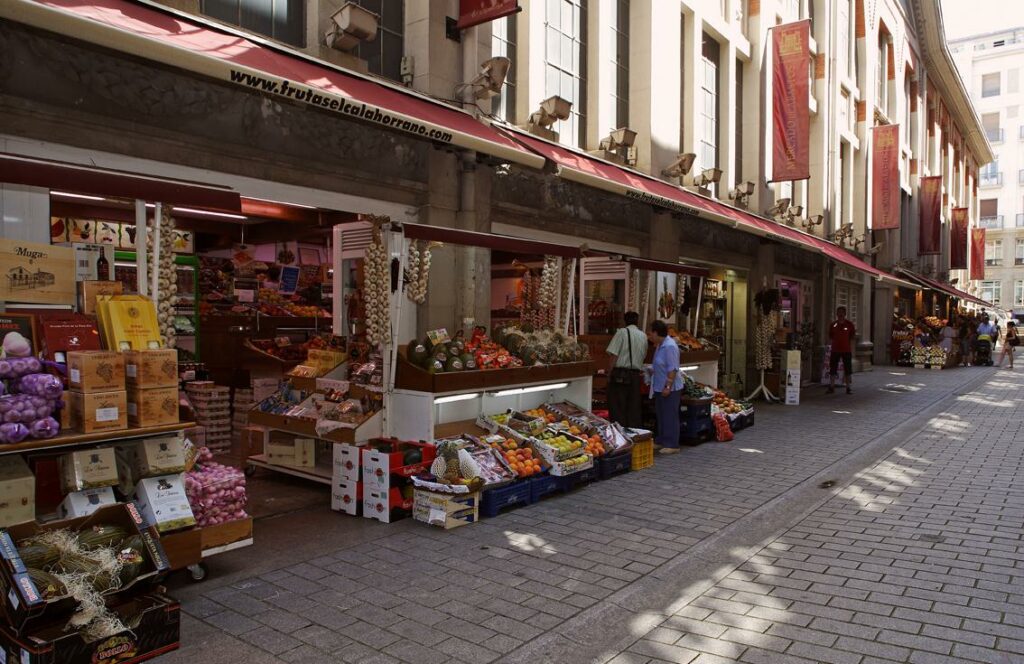
The San Blas Market, also known as the Plaza de Abastos de Logroño, is one of the liveliest places in the city’s historic centre. It was inaugurated in 1930, although its history goes back even further, as it occupies the site of the old church of San Blas, which was demolished in the 19th century.
Its eclectic style building stands out for its use of red brick, iron and glazed ceramics, with two towers that catch the eye from Calle Sagasta. Inside, the atmosphere is that of a traditional market, with some 30 stalls selling everything: fruit, vegetables, fish, meat, pickles, spices… Many of them are family businesses that have been supplying the city for generations.
But it’s not just a place to shop: there are also tastings, gastronomic workshops and cultural activities, making it a key point for locals and visitors alike. If you want to get to know the authentic local life of Logroño and enjoy quality products, this market is an essential stop.
Laurel Street

Calle del Laurel is the gastronomic epicentre of things to do in Logroño, the place where locals and visitors mingle to enjoy one of the city’s most beloved customs: tapas. Here there are no restaurants with tablecloths, but bars full of pinchos, wines and atmosphere. With more than 65 bars in barely 200 metres, each place has its own speciality: mushrooms, zorropitos, cojonudos, bocatita de sepia, or prawn brochettes.
The atmosphere is unbeatable at any time, but especially at night or on weekends, when the street is full of laughter, toasts and good vibes. This area is perfect for tasting Rioja wine as it should be: glass in hand, standing up, and with a skewer in the other.
An essential experience to see in Logroño, because here gastronomy is not tasted: it is lived.
Museum of La Rioja
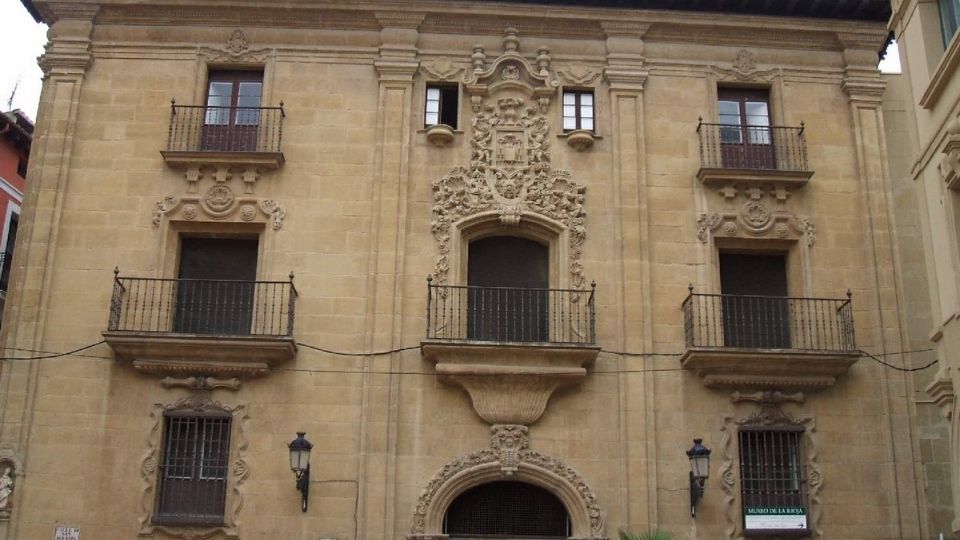
The Museum of La Rioja is in the heart of the historic centre of Logroño, in Calle San Agustín. It occupies the former Espartero Palace, an 18th century building that was the residence of General Baldomero Espartero, a key figure in the history of 19th century Spain. The building itself is worth a visit for its Baroque architecture and historical value.
Inside the museum, the tour takes you through the history of La Rioja from prehistoric times to the 20th century, passing through Roman times, the Middle Ages and Baroque art. There are sections on archaeology, with pieces such as Roman mosaics, another on fine arts, with sculptures and religious paintings (such as the San Millán tablets), and a part dedicated to ethnography, where traditional objects from rural life in La Rioja are on display.
Admission is free and the museum also offers temporary exhibitions, workshops and cultural activities throughout the year. It is the perfect place to get a better understanding of the region’s identity and enjoy a quiet visit, ideal if you are interested in history or if you are strolling around the old town of Logroño.
Revellín Wall

The Muralla del Revellín is the last visible vestige of the ancient fortifications that protected Logroño in modern times. Built in the 16th century to defend the city from French troops, this stone structure conserves a monumental gate and part of the original walled wall, next to the so-called Cubo del Revellín.
In addition to its historical value, the wall has become a symbol of resistance and local pride. Today you can walk along it, climb the restored cube and enjoy views of the old quarter from the top.
An ideal spot to connect with the military history to be seen in Logroño in just a few minutes.
At night, its lighting highlights the original stonework and makes this corner one of the most photogenic in the historic centre of Logroño.
Portales Street

Calle Portales is one of the most emblematic and lively streets to see in Logroño. Located in the heart of the old quarter, it connects the Co-cathedral of Santa María la Redonda with the Espolón, and owes its name to the arcades that flank its buildings, ideal for strolling even on rainy days.
Historically, it has been the centre of commerce, social life and meetings in the city. Today it still is, with traditional shops, bookshops, bars with history and charming cafés. It is also one of the sections of the Camino de Santiago, so it is common to see pilgrims walking between terraces and shop windows.
A street that preserves the soul of the city and where there is always something going on, perfect for stopping, observing and enjoying the atmosphere of La Rioja.
Church of Santiago el Real
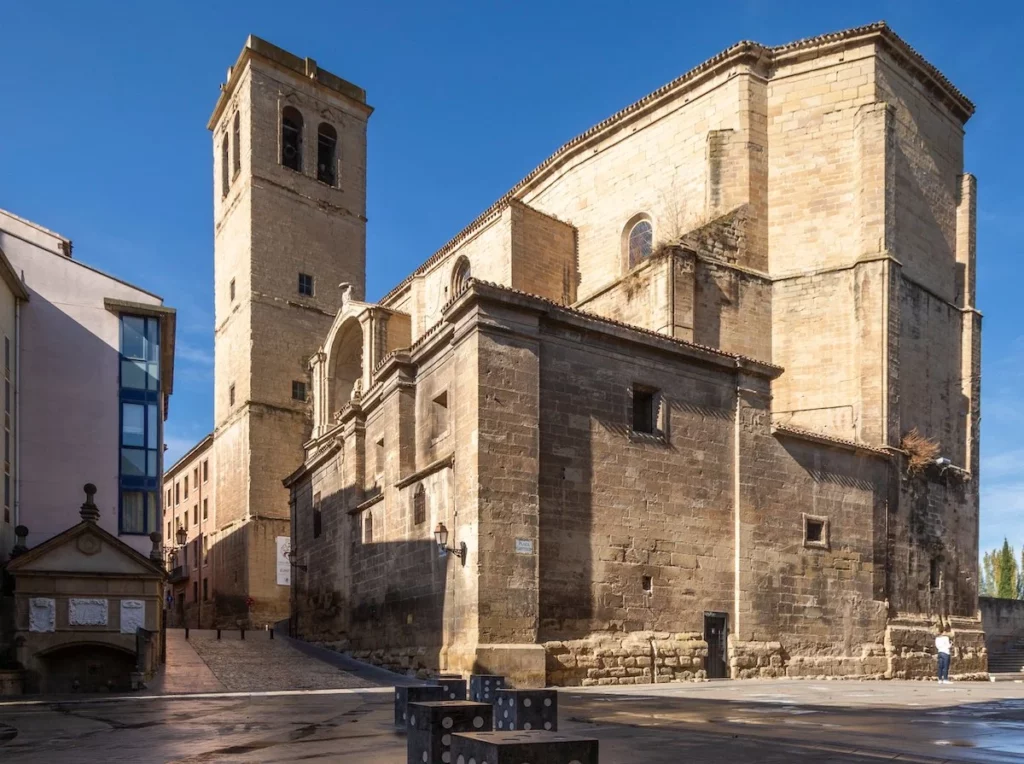
The Church of Santiago el Real is one of the most outstanding and historic sights to see in Logroño. Strategically located on the Camino de Santiago, this church not only attracts pilgrims from all over the world, but also captures the attention of history and art lovers. Famous for its impressive representation of Santiago Matamoros on the façade, this figure has given rise to popular expressions such as “you’ve got more balls than Santiago’s horse”, reflecting the epic and heroic character associated with the saint.
Rebuilt in the 16th century on the foundations of older structures, the Church of Santiago el Real is a magnificent example of religious architecture with a rich interior decoration that includes valuable works of art and ornaments. Every element of the church’s interior, from the altarpieces to the stained glass windows, tells part of the city’s religious and cultural history.
A visit to the Church of Santiago el Real is a must for anyone wishing to understand the importance of Logroño as a meeting point for faith, history and culture. It is a place that offers not only a spiritual refuge, but also a deep connection with the past, making it an outstanding place to see in Logroño. Here, visitors can immerse themselves in the devout atmosphere that has been central to the community over the centuries, making this church a living testimony to tradition and faith.
dID YOU KNOW… Logroño hides a giant-sized goose game”?
With DareMapp, you can discover the most famous ones… and without getting lost among them!
Franco-Españolas Wineries
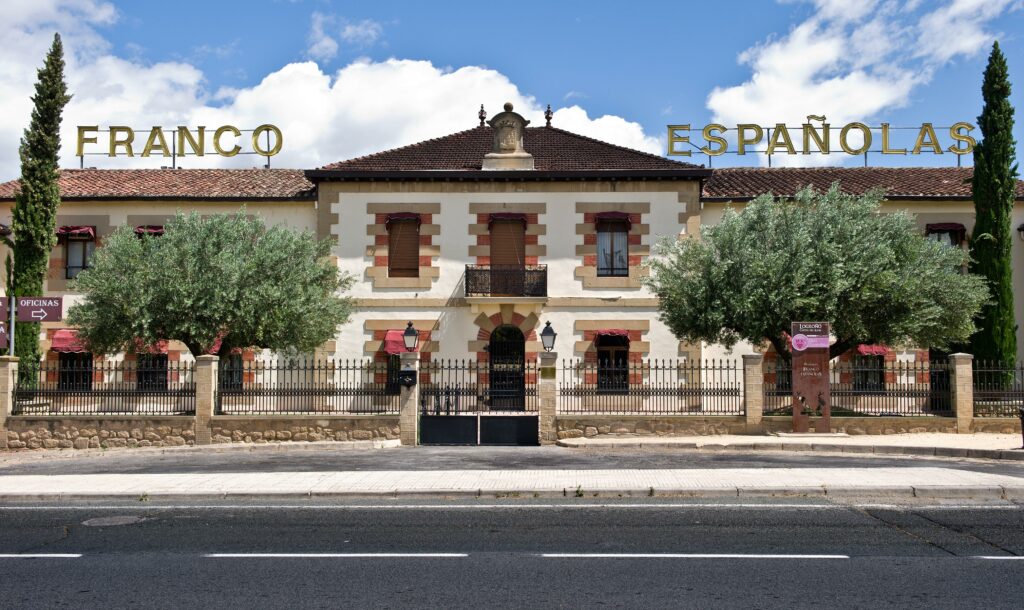
Bodegas Franco-Españolas is one of the most emblematic wineries to visit in Logroño. They were founded in 1890, as a result of the collaboration between a French businessman and Rioja wine growers, at a time when the French were looking for new land after the phylloxera plague that devastated their vineyards. They are located next to the river Ebro, just a few steps from the historic centre, and form part of the living history of Rioja wine.
Among their best-known brands are Bordón, a classic range of crianza, reserva and gran reserva reds, and Diamante, a semi-sweet white wine that was a pioneer in its style. As well as producing wine, the wineries offer guided tours, tastings, workshops and special events such as concerts or themed experiences.
They can be visited all year round and are an ideal stop to get to know the winemaking tradition of La Rioja in a historic and perfectly preserved environment.
Stone Bridge

The Stone Bridge, also known as the Bridge of San Juan de Ortega, is one of the most emblematic and photogenic structures to see in Logroño. Since its initial construction in the 11th century, this bridge has played a crucial role in the history of the city, facilitating the crossing of the river Ebro and connecting various parts of the region. Over the centuries, the bridge has been rebuilt several times due to flood and war damage, but it has always maintained its strategic importance and architectural beauty.
Today, the Puente de Piedra is not only a testament to medieval engineering, but also a favourite spot for visitors looking to capture the essence of things to do in Logroño. The views from the bridge are truly picturesque, offering breathtaking panoramas of the Ebro River and the city. Every angle offers a new perspective, making it an ideal spot for photography enthusiasts.
If you’re wondering things to do in Logroño, the Puente de Piedra should be on your list. Not only for its historical importance, but also for the opportunity to enjoy moments of tranquillity while admiring the flow of the river and the surrounding urban landscape. Visiting this bridge allows you to appreciate not only the history of Logroño, but also its evolution into a modern city without losing the charm of its past.
Ruavieja Street
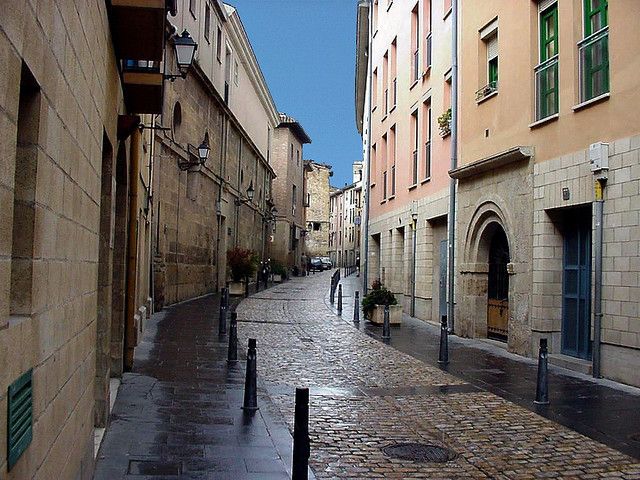
Calle Ruavieja is the oldest street to see in Logroño and one of the most important in the historic centre. It forms part of the original route of the Pilgrims’ Route to Santiago de Compostela, so for centuries it has been a stopping-off point for pilgrims crossing the city from the Puente de Piedra (Stone Bridge).
Along its route you will find old mansions with noble coats of arms, the pilgrims’ hostel, the Hermitage of San Gregorio and spaces such as the Calado de San Gregorio or the Espacio Lagares, dedicated to the wine-making tradition of La Rioja. A stroll along this street is a journey into the city’s medieval past.
To walk along Calle Ruavieja is to discover the essence of Logroño: history, Jacobean tradition and the mark of wine in every corner.
San Bartolomé Church

The Church of San Bartolomé is the oldest church in Logroño, built between the 12th and 13th centuries. Its origin is linked to the Pilgrim’s Way to Santiago de Compostela, and it stands out for its Gothic façade sculpted with scenes from the life of the apostle and its Romanesque tower, which served as a defensive tower. It was declared a National Monument in 1866 and is one of the essential stops in the old part of the city.
San Bartolomé is one of the great symbols of the old quarter of Logroño, a temple with centuries of history that unites art, religion and the constant passage of pilgrims.
In addition to its artistic value, the tower of San Bartolomé was used as a defensive tower, forming part of the city’s medieval wall system.
This church is a regular stop for pilgrims on the Pilgrims’ Route to Santiago de Compostela, which crosses its façade.
Co-cathedral of Santa María de la Redonda
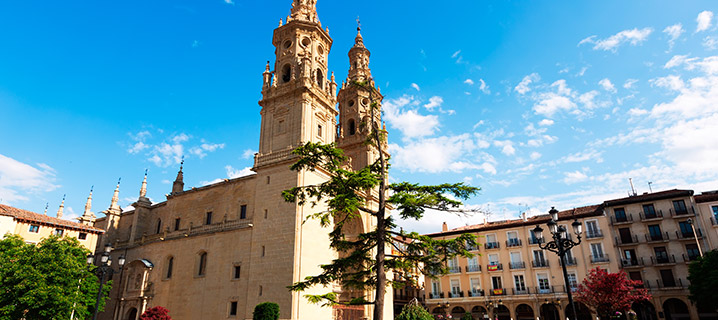
The Co-cathedral of Santa María de la Redonda is the main church in Logroño. It is located in the heart of the old quarter and owes its name to an ancient circular church that stood on this site in the Middle Ages. The current building was constructed between the 15th and 18th centuries and stands out for its impressive Baroque façade and twin towers, one of the city’s icons.
Inside it houses several artistic gems, such as a 17th-century altarpiece and a painting attributed to Michelangelo, known as the Calvary. It is also one of the key stops on the Pilgrim’s Route to Santiago de Compostela as it passes through Logroño.
Each of these sites offers a unique window into the history and culture of Logroño, and together they form a perfect itinerary for any visitor seeking to understand the essence of the city.
💫You’re just a click away from swapping reading for adventure.
3 Traditions to See in Logroño That You Didn’t Know About
Logroño offers a number of traditions that not only delight locals, but also attract visitors from far and wide. Here are three traditions that you should definitely consider in your itinerary of things to do in Logroño:
- Fiestas of San Bernabé: These are held in June and commemorate the defence of Logroño in 1521. They include historical re-enactments, the miracle of the fish and free distribution of “bread, wine and fish”.
- Haro Wine Battle: Takes place on 29 June in Haro, near Logroño. Thousands of people soak up the wine in a unique and fun festival in the middle of nature.
- Procession of the Holy Burial: This is the most solemn act of Holy Week in Logroño, with processional floats and brotherhoods that walk through the old quarter in a display of faith and tradition.
These traditions not only offer a glimpse into Logroño’s rich cultural history, but also provide visitors with an authentically local experience. When planning things to do in Logroño, be sure to consider these celebrations to fully experience the spirit of this charming Spanish city.
🗺️Tu route around Logroño, with DareMapp
📍More than 30 points of interest
➤ An organised route to make the most of your time
💡Recommendations, excursions & unique experiences
❓Questions, quizzes and more than 2h of narrated content

Remember that with DareMapp you can take a multitude of guided tours in an interactive way.


